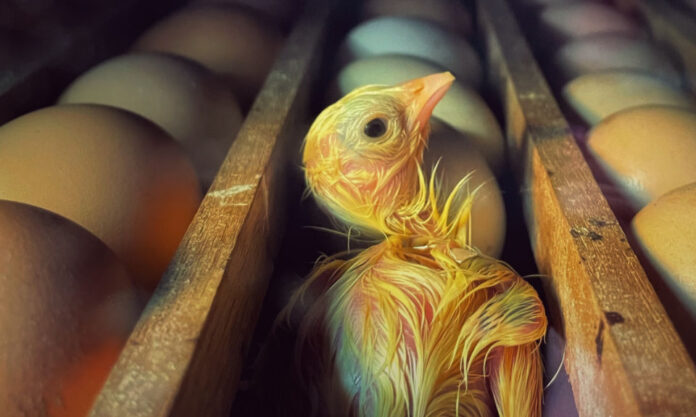Well, it’s not quite as old as time itself, but it’s a problem that has certainly been around since we had chickens. Or is it eggs? Doesn’t matter, because Nanjing scientists have been the key in a team which has answered the ultimate riddle.
Previously, some of the greatest minds to have ever existed have worked hard at unravelling the causality dilemma of the chicken and the egg. Aristotle, Macrobius and Plutarch were just three of the mighty philosophers kept awake at night by the paradox.
And some of the not-so-greatest minds, simplifying the conundrum and turning it in to a trick question; no one mentioned what kind of egg. We’ve had eggs for long before we had chickens, e.g. dinosaur eggs. So there’s your answer.
But Nanjing has now cracked it [apologies, Ed.] for real, and it was science, not philosophy, to the rescue.
Researchers at Nanjing University and the University of Bristol in the UK now believe the chicken-and-egg problem boils down to evidence suggesting modern birds and reptiles’ early ancestors may have given birth to live young, rather than laying eggs from which they later hatch.
Or even, it turns out, either or. That’s thanks to the researchers’ study of 51 fossil species and 29 living species which has been published in the monthly peer-reviewed scientific journal, “Nature Ecology and Evolution”.
Therein, it all comes down to the concept of Extended Embryo Retention (EER), whereby mothers retain their young for different periods of time, not, as in our case, the standard 9 months.
This they do dependent on the prevalent conditions for their offspring’s survival. Nice and warm and safe out there? You’re entering the world “au naturel”. Cold with loads of predators around? You’re going to need a shell for survival.
Jiang Baoyu at Nanjing University was leader in the project. “Sometimes, closely-related species show both behaviours, and it turns out that live-bearing lizards can flip back to laying eggs much-more easily than had been assumed”, said Jiang.
As per the Indian Express, “EER, where the mother keeps the developing young within their body, is quite common among vertebrates today. It is also quite widespread and variable in lizards and snakes. These animals can release the young, either inside an egg or as little wrigglers, during different stages of their development. EER could present an advantage when mothers are able to release their young when temperatures are warm and there are enough food supplies”.
There you have it. World’s-oldest philosophical dilemma solved. The chicken came first. Well done, Nanjing!









